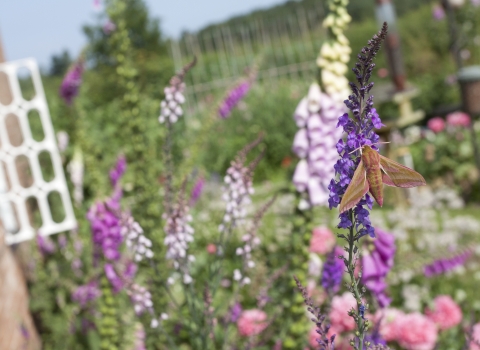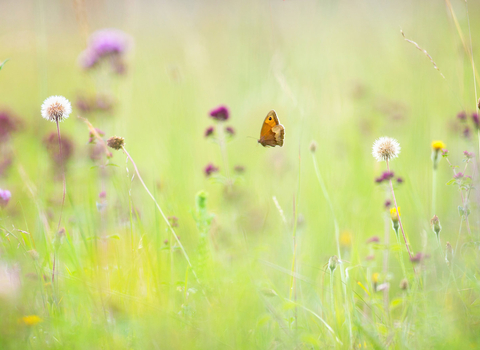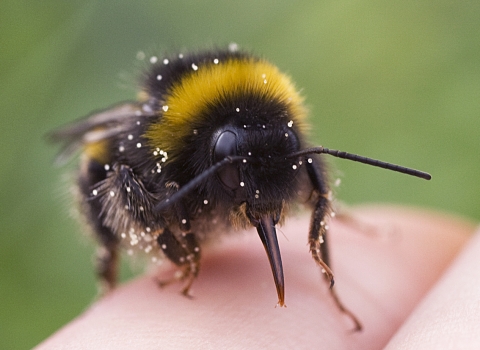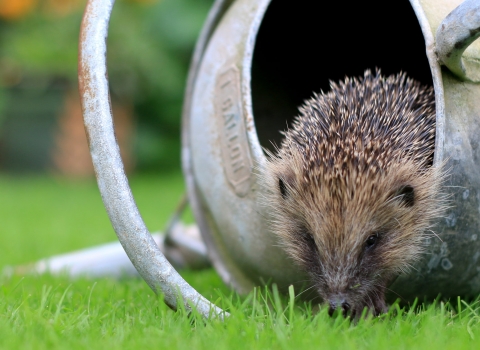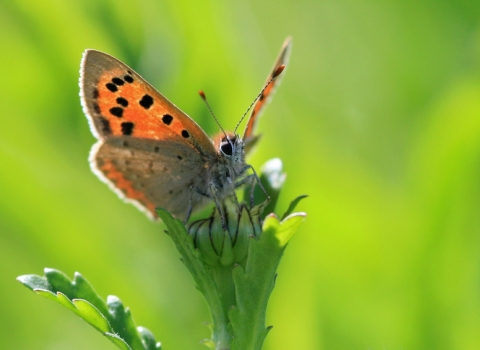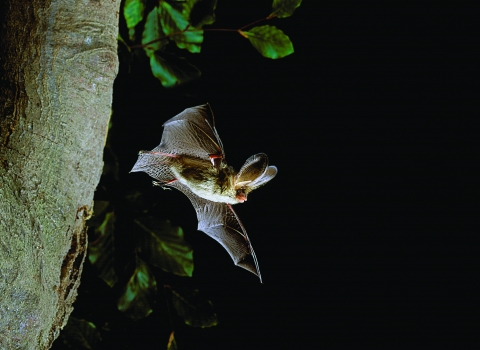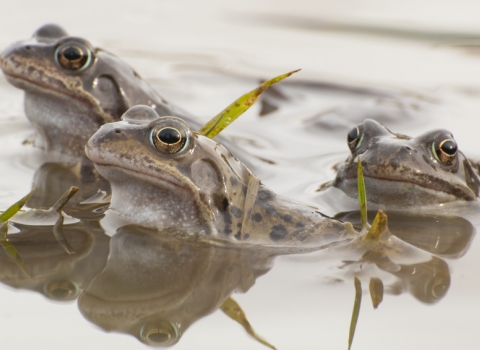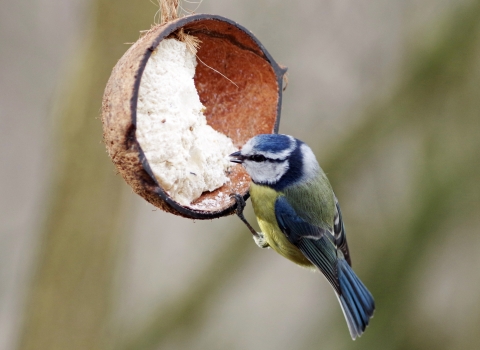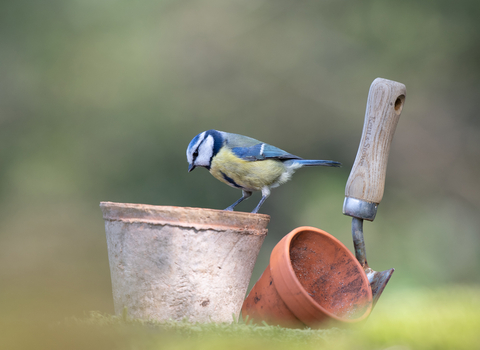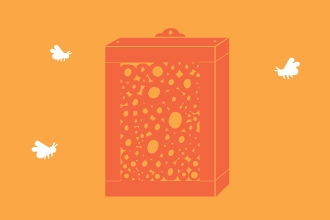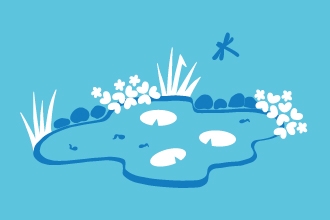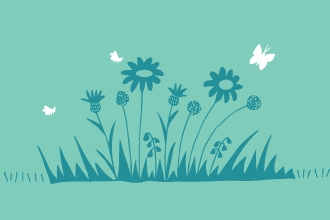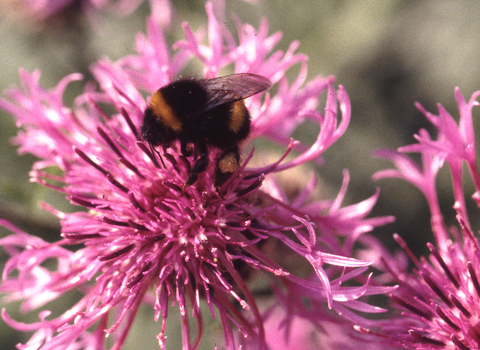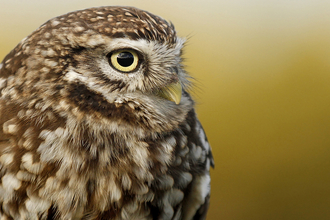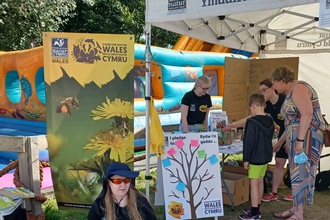Go wild in your garden!
We can all do something to provide for local wildlife so why not start today with one of the ideas on our website. Wildlife friendly gardening is about creating shelter and providing food, water and nesting sites. You will be rewarded by seeing and hearing more birds, butterflies, hedgehogs and other wild creatures that would not have had a reason to visit you before.
Together, our gardens are a vast living landscape. With an estimated 16 million gardens in the UK, the way they are cared for can make a big difference to the natural world.
Our 10 top tips!
Your own wildlife garden joined with thousands of other wildlife friendly gardens creates one big nature reserve, a green corridor bursting with life and colour. Discover how with our tips below!
1) Grow nectar rich flowers and shrubs ...
... to attract bees, butterflies and other insects. Try to have something in flower all year round.
2) Plant native trees, hedges and climbers
They provide good shelter and food for insects, birds and mammals. Choose varieties that produce berries. Hedges are important green corridors linking patches of habitat.
3) Create a small meadow
Wildflower meadows are scarce so have a go at creating your own. The easiest option is to leave an area of grass to grow, there may be some wildflowers already there. You can add local, native wildflowers or seeds onto bare patches of soil, but not successfully to a dense grass sward.
4) Dig a pond
They are popular with amphibians, reptiles, birds and insects including dragonflies. Ideally one edge should slope gently for easy access and the other should have tall marginal plants for shelter and emerging dragonflies. Only use native pond plants and don’t stock with fish.
5) Make log and stone piles, rockeries and stonewalls
Small mammals, reptiles, amphibians, birds, insects and invertebrates will all benefit and it will give nature’s pest controllers somewhere to hide away from predators.
6) Provide food and water for birds all year round
They will eat some pests while awaiting their turn at the table. Try different types of bird food to attract different species of bird.
7) Make bird and bat boxes, hedgehog and insect homes ...
... out of untreated wood. Site bat boxes in threes around the tree and bird boxes in sheltered spots facing eastward and out of reach of cats.
8) Make a compost heap
Your garden will benefit from it and it makes a fantastic habitat for amphibians and reptiles; your natural garden pest controllers. By using homemade or peat free compost you are safeguarding a decreasing habitat destroyed by peat digging.
9) Don’t use pesticides
They will also kill beneficial insects such as bees, lacewings, hoverflies and ladybirds. Choose natural ways to control slugs and snails. Encourage a natural balance to develop by having a range of habitats attracting a varied wildlife.
10) Garden without invasive plants
Once they’ve escaped our gardens into the wild, invasive plants affect nature and wildlife negatively. They are also costly to remove. Know what you grow, stop invasive plants from spreading and compost them with care.
Relax and enjoy...
Don’t be too tidy. Leave some areas undisturbed. Install a seat so you have somewhere to sit and enjoy your visiting wildlife!
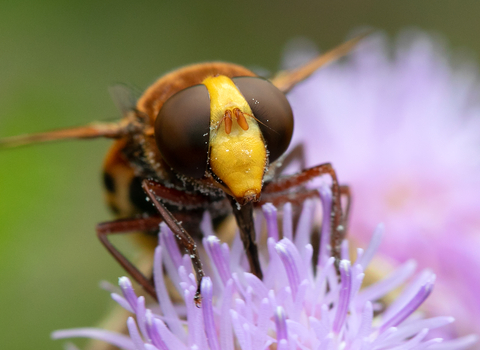
Hornet mimic hoverfly © Jon Hawkins Surrey Hills Photography
Wild about hoverflies!
The Wildlife Trusts and RHS set up Wild About Gardens to celebrate wildlife gardening and to encourage people to use their gardens to take action to help support nature. Many of our common garden visitors – including hedgehogs, house sparrows and starlings – are increasingly under threat. But together we can make a difference.
This year we’re going wild about hoverflies. Find out how to live alongside these precious pollinators.
Be inspired...
There is so much you can do in your garden for wildlife - take a peek at some of our actions and how to guides. Enjoy!
All our lives are better when they're a bit wild

